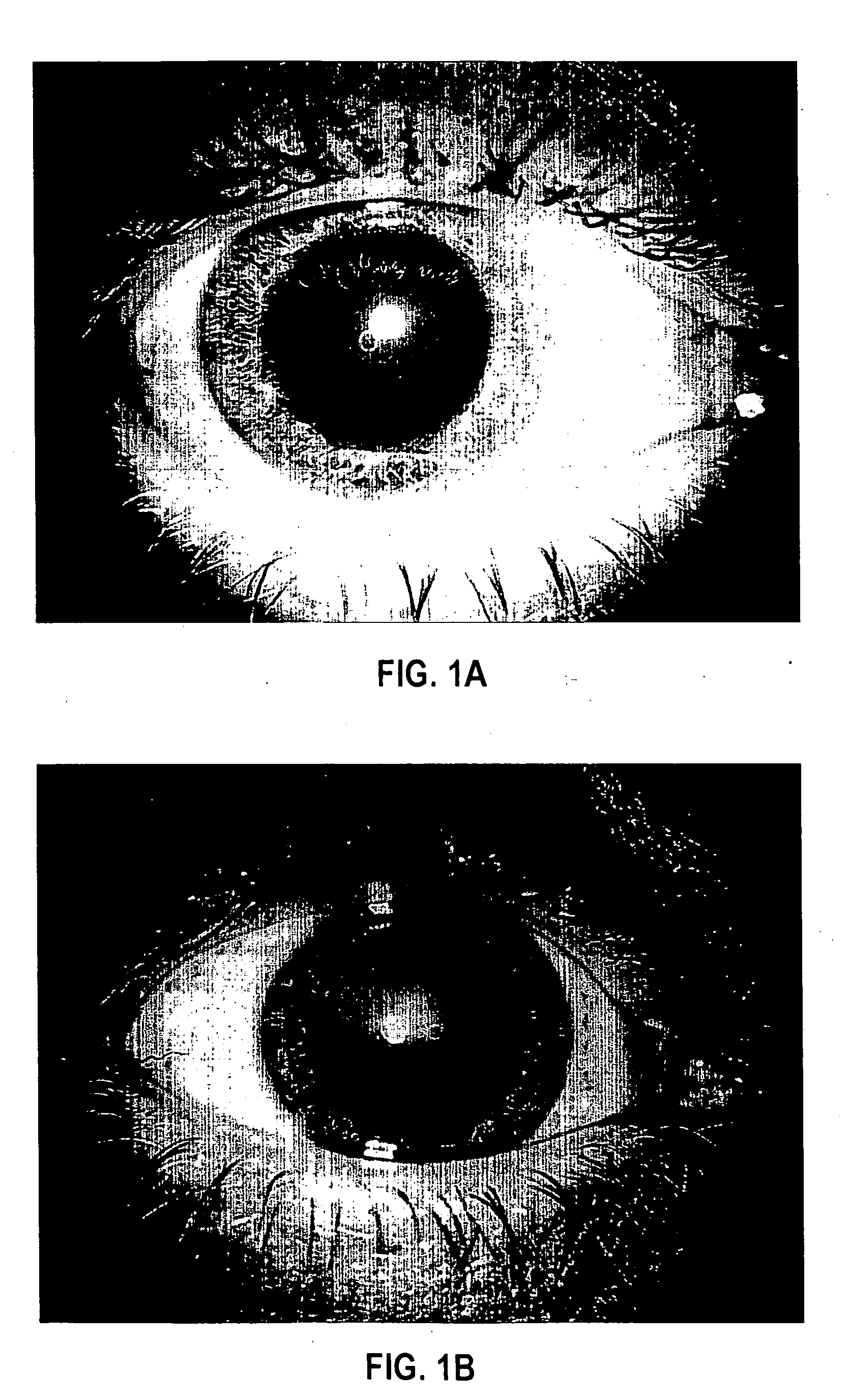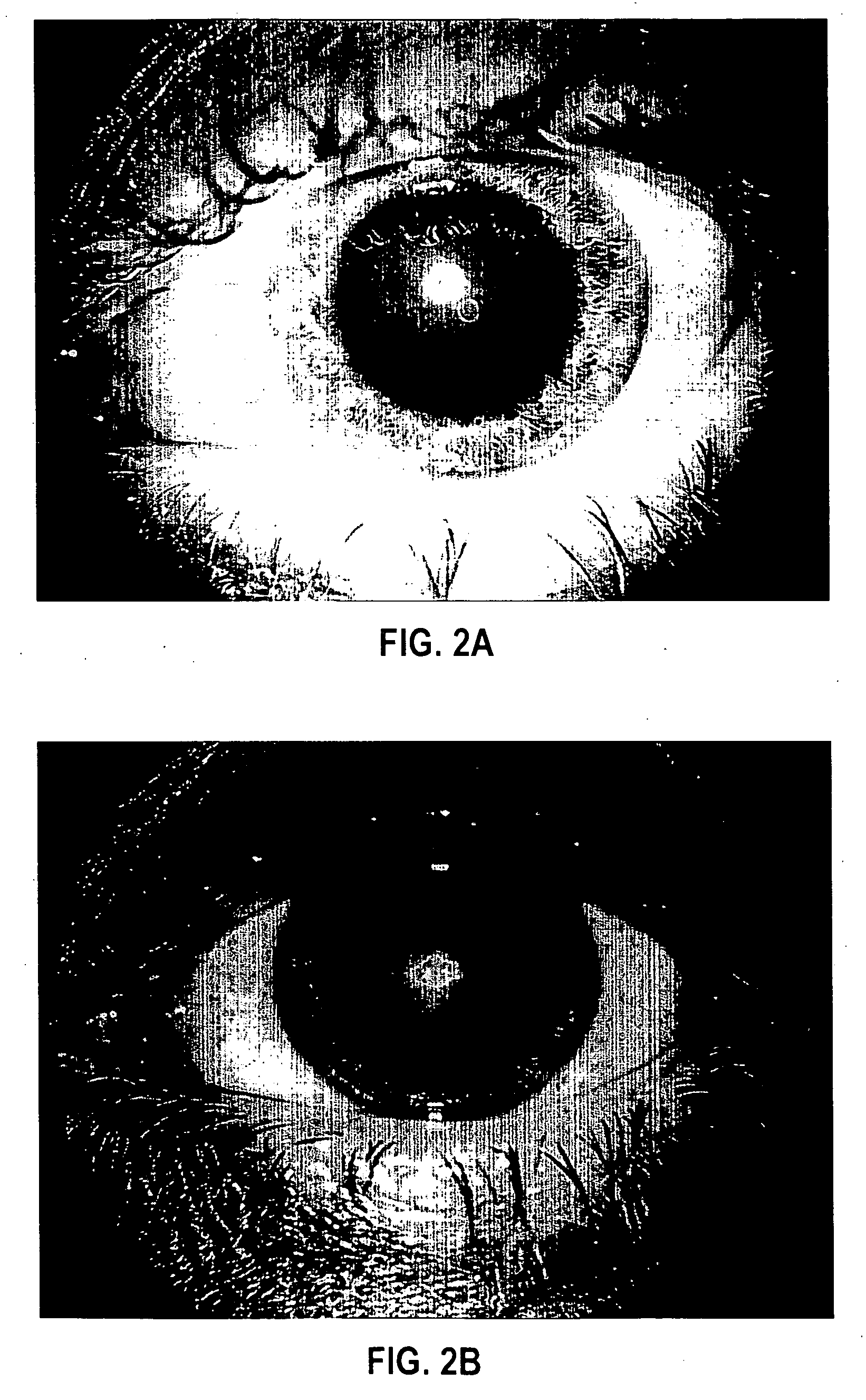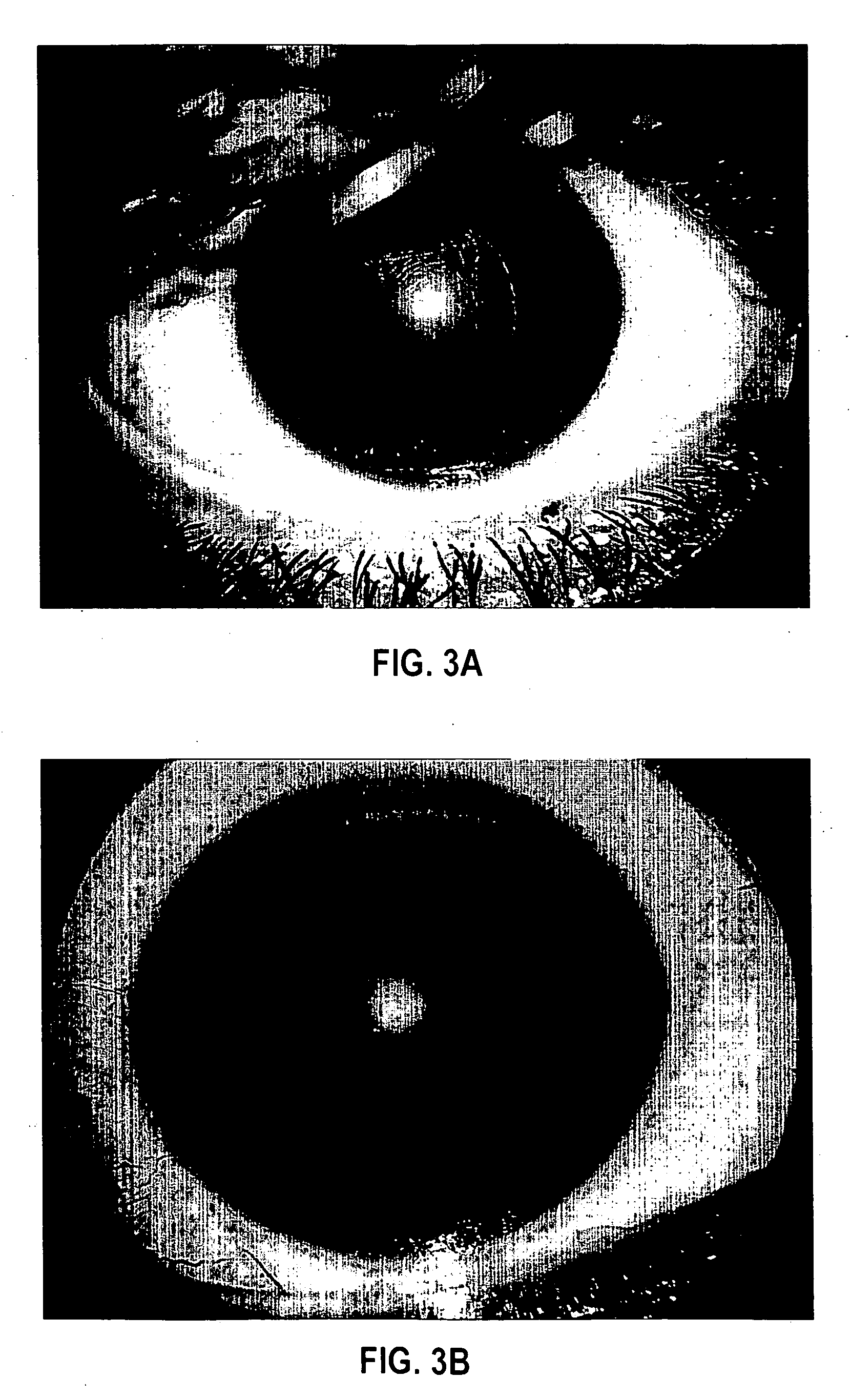Treatment of conditions associated with the presence of macromolecular aggregates, particularly ophthalmic disorders
a macromolecular aggregate and aggregate technology, applied in the field of treatment of conditions associated with the presence of macromolecular aggregates, particularly ophthalmic disorders, can solve the problems of corneal loss, corneal clarity and luster loss, and very tough and difficult to penetrate protective layers, so as to reduce contrast sensitivity, prevent and treat, effect of reducing visual acuity
- Summary
- Abstract
- Description
- Claims
- Application Information
AI Technical Summary
Benefits of technology
Problems solved by technology
Method used
Image
Examples
example 1
[0083] An eye drop formulation of the invention, Formulation 1, was prepared as follows: High purity de-ionized (DI) water (500 ml) was filtered via a 0.2 micrometer filter. MSM (27 g), EDTA (13 g), and L-carnosine (5 g) were added to the filtered DI water, and mixed until visual transparency was achieved, indicating dissolution. The mixture was poured into 10 mL bottles each having a dropper cap. On a weight percent basis, the eye drops had the following composition:
Purified de-ionized water91.74 wt. % MSM4.95 wt. %Di-sodium EDTA2.39 wt. %L-Carnosine 0.92 wt. %.
example 2
[0084] Formulation 1 was evaluated for efficacy in treating four subjects, all males between 52 and 84 years of age of mixed ethnicity. Subject 1 was in his fifties and had no visual problems or detectable abnormalities of the eye. Subjects 2 and 3 were in their fifties and had prominent arcus senilis around the cornea periphery in both eyes but no other adverse ocular conditions (arcus senilis is typically considered to be a cosmetic blemish). Subject 4 was in his eighties and was suffering from cataracts and Salzmann's nodules, and reported extreme photophobia and problems with glare. This subject was having great difficulty reading newspapers, books, and information on a computer screen, because of the glare and loss in visual clarity.
[0085] The formulation was administered to the subjects, one drop (approximately 0.04 mL) to each eye, two to four times per day for a period of over 12 months. All subjects were examined by an ophthalmologist during and after 12 months. No side ef...
example 3
[0093] A second eye drop formulation of the invention, Formulation 2, was prepared as follows: High purity de-ionized (DI) water (500 ml) was filtered via a 0.2 micrometer filter. MSM (13.5 g), EDTA (6.5 g), and L-carnosine (5.0 g) were added to the filtered DI water, and mixed until visual transparency was achieved, indicating dissolution. The mixture was poured into 10 mL bottles each having a dropper cap. On a weight percent basis, the eye drop composition had the following components:
Purified de-ionized water95.24 wt. % MSM2.57 wt. %Di-sodium EDTA1.24 wt. %L-Carnosine0.95 wt. %
PUM
| Property | Measurement | Unit |
|---|---|---|
| wt. % | aaaaa | aaaaa |
| molar ratio | aaaaa | aaaaa |
| size | aaaaa | aaaaa |
Abstract
Description
Claims
Application Information
 Login to View More
Login to View More - R&D
- Intellectual Property
- Life Sciences
- Materials
- Tech Scout
- Unparalleled Data Quality
- Higher Quality Content
- 60% Fewer Hallucinations
Browse by: Latest US Patents, China's latest patents, Technical Efficacy Thesaurus, Application Domain, Technology Topic, Popular Technical Reports.
© 2025 PatSnap. All rights reserved.Legal|Privacy policy|Modern Slavery Act Transparency Statement|Sitemap|About US| Contact US: help@patsnap.com



